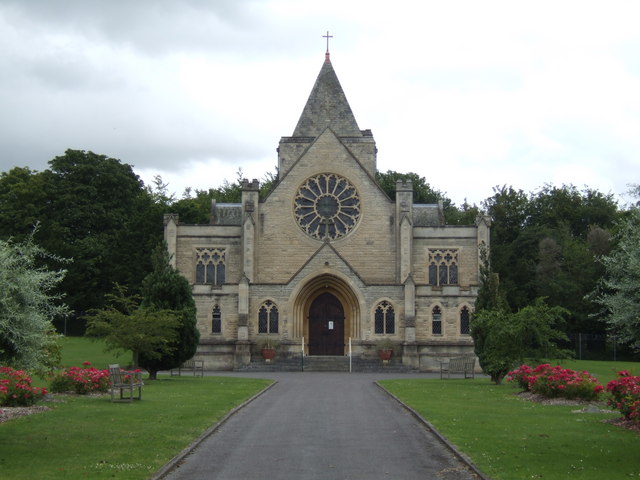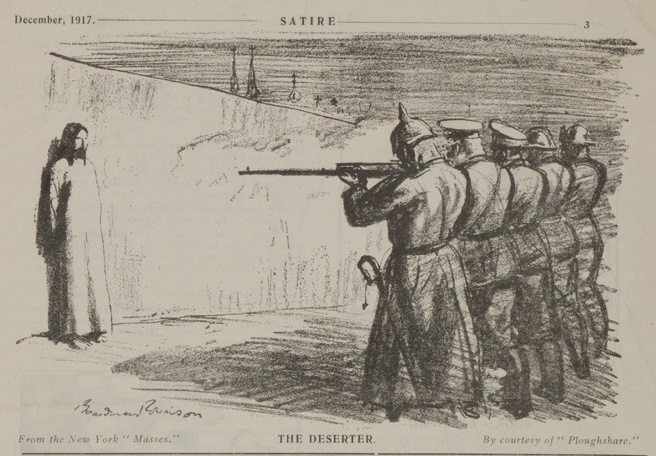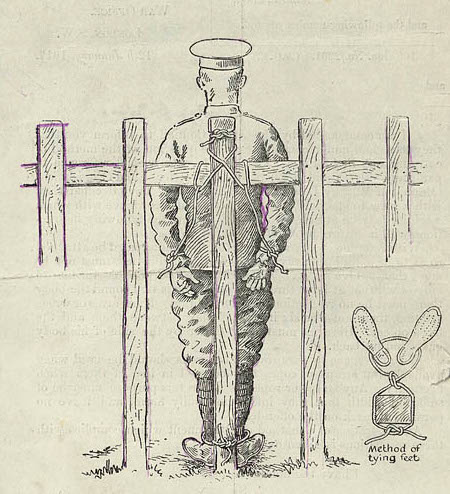|
Sling Camp
Sling Camp was a World War I camp occupied by New Zealand soldiers beside the then-military town of Bulford on the Salisbury Plain in Wiltshire, England. History The camp was initially created as an annexe to Bulford Camp in 1903; it was originally named "Sling Plantation" after the nearby woods. Soon after the beginning of World War I, New Zealand troops started work on building wooden huts here. They were later joined by Canadian troops, joiners, bricklayers, and civilian workers. The word "Plantation" was then dropped from the title and it simply became Sling Camp. After building was completed, it was said that if each hut were placed end-to-end they would measure 6 miles. In 1916, the camp was occupied by New Zealand forces and was then known as Anzac Camp by some. It then comprised four main sections: Auckland, Wellington, Otago, and Canterbury Lines. It was officially called the 4th New Zealand Infantry Brigade Reserve Camp, and trained reinforcements and casualties who were ... [...More Info...] [...Related Items...] OR: [Wikipedia] [Google] [Baidu] |
World War I
World War I (28 July 1914 11 November 1918), often abbreviated as WWI, was one of the deadliest global conflicts in history. Belligerents included much of Europe, the Russian Empire, the United States, and the Ottoman Empire, with fighting occurring throughout Europe, the Middle East, Africa, the Pacific, and parts of Asia. An estimated 9 million soldiers were killed in combat, plus another 23 million wounded, while 5 million civilians died as a result of military action, hunger, and disease. Millions more died in genocides within the Ottoman Empire and in the 1918 influenza pandemic, which was exacerbated by the movement of combatants during the war. Prior to 1914, the European great powers were divided between the Triple Entente (comprising France, Russia, and Britain) and the Triple Alliance (containing Germany, Austria-Hungary, and Italy). Tensions in the Balkans came to a head on 28 June 1914, following the assassination of Archduke Franz Ferdin ... [...More Info...] [...Related Items...] OR: [Wikipedia] [Google] [Baidu] |
Bulford
Bulford is a village and civil parish in Wiltshire, England, close to Salisbury Plain. The village is close to Durrington and about north of the town of Amesbury. The Bulford Camp army base is separate from the village but within the parish. The Salisbury Avon forms the western boundary of the parish, and the village is near the confluence of the Nine Mile River with the Avon. The Bulford Kiwi – a large chalk representation of a kiwi – is on a hill above the village. History Evidence of occupation of the area in the late Neolithic era is provided by many round barrows on the downs. A Bronze Age boundary ditch is in the northeast of the parish. The 1086 Domesday Book recorded 39 households at Bulford, within an estate of Amesbury Abbey. The name is derived from the Old English ''bulut ieg ford'' meaning 'ragged robin island ford'. It is recorded in the Wiltshire Charter Rolls of 1199 as ''Bultiford'' and as ''Bultesforda'' in 1270. It is then recorded as ''Bultefo ... [...More Info...] [...Related Items...] OR: [Wikipedia] [Google] [Baidu] |
Salisbury Plain
Salisbury Plain is a chalk plateau in the south western part of central southern England covering . It is part of a system of chalk downlands throughout eastern and southern England formed by the rocks of the Chalk Group and largely lies within the county of Wiltshire, but stretches into Hampshire. The plain is famous for its rich archaeology, including Stonehenge, one of England's best known landmarks. Large areas are given over to military training and thus the sparsely populated plain is the biggest remaining area of calcareous grassland in northwest Europe. Additionally the plain has arable land, and a few small areas of beech trees and coniferous woodland. Its highest point is Easton Hill. Physical geography The boundaries of Salisbury Plain have never been truly defined, and there is some difference of opinion as to its exact area. The river valleys surrounding it, and other downs and plains beyond them loosely define its boundaries. To the north the scarp of the ... [...More Info...] [...Related Items...] OR: [Wikipedia] [Google] [Baidu] |
Wiltshire
Wiltshire (; abbreviated Wilts) is a historic and ceremonial county in South West England with an area of . It is landlocked and borders the counties of Dorset to the southwest, Somerset to the west, Hampshire to the southeast, Gloucestershire to the north, Oxfordshire to the northeast and Berkshire to the east. The county town was originally Wilton, after which the county is named, but Wiltshire Council is now based in the county town of Trowbridge. Within the county's boundary are two unitary authority areas, Wiltshire and Swindon, governed respectively by Wiltshire Council and Swindon Borough Council. Wiltshire is characterised by its high downland and wide valleys. Salisbury Plain is noted for being the location of the Stonehenge and Avebury stone circles (which together are a UNESCO Cultural and World Heritage site) and other ancient landmarks, and as a training area for the British Army. The city of Salisbury is notable for its medieval cathedral. Swindon is the ... [...More Info...] [...Related Items...] OR: [Wikipedia] [Google] [Baidu] |
Bulford Camp
Bulford Camp is a military camp on Salisbury Plain in Wiltshire, England. Established in 1897, the site continues in use as a large British Army base. The camp is close to the village of Bulford and is about northeast of the town of Amesbury. The camp forms part of the Tidworth, Netheravon and Bulford (TidNBul) Garrison. History The camp was built as a mixture of tents and huts in 1897. The section called Sling Camp was occupied by soldiers of the New Zealand Expeditionary Force during the First World War. At the end of the war, the overcrowded camp was the site of the Battle of Bulford, when New Zealand troops staged a brief mutiny. Later, New Zealanders awaiting demobilization left their mark by creating the Bulford Kiwi, a large chalk figure on the hillside overlooking the camp. Permanent barracks were built during the inter-war years: the current names were applied in 1931. Carter Barracks, a hutted camp north of Bulford Droveway, beyond the northern boundary of the present ... [...More Info...] [...Related Items...] OR: [Wikipedia] [Google] [Baidu] |
Anzac
The Australian and New Zealand Army Corps (ANZAC) was a First World War army corps of the Mediterranean Expeditionary Force. It was formed in Egypt in December 1914, and operated during the Gallipoli campaign. General William Birdwood commanded the corps, which primarily consisted of troops from the First Australian Imperial Force and 1st New Zealand Expeditionary Force, although there were also British and Indian units attached at times throughout the campaign. The corps disbanded in 1916, following the Allied evacuation of the Gallipoli peninsula and the formation of I ANZAC Corps and II ANZAC Corps. The corps was reestablished, briefly, in the Second World War during the Battle of Greece in 1941. History Original formation Plans for the formation began in November 1914 while the first contingent of Australian and New Zealand troops were still in convoy bound for, as they thought, Europe. However, following the experiences of the Canadian Expeditionary Force encamped ... [...More Info...] [...Related Items...] OR: [Wikipedia] [Google] [Baidu] |
Spanish Influenza
The 1918–1920 influenza pandemic, commonly known by the misnomer Spanish flu or as the Great Influenza epidemic, was an exceptionally deadly global influenza pandemic caused by the H1N1 influenza A virus. The earliest documented case was March 1918 in Kansas, United States, with further cases recorded in France, Germany and the United Kingdom in April. Two years later, nearly a third of the global population, or an estimated 500 million people, had been infected in four successive waves. Estimates of deaths range from 17 million to 50 million, and possibly as high as 100 million, making it one of the deadliest pandemics in history. The pandemic broke out near the end of World War I, when wartime censors suppressed bad news in the belligerent countries to maintain morale, but newspapers freely reported the outbreak in neutral Spain, creating a false impression of Spain as the epicenter and leading to the "Spanish flu" misnomer. Limited historical epidemiological da ... [...More Info...] [...Related Items...] OR: [Wikipedia] [Google] [Baidu] |
Conscientious Objector
A conscientious objector (often shortened to conchie) is an "individual who has claimed the right to refuse to perform military service" on the grounds of freedom of thought, conscience, or religion. The term has also been extended to objecting to working for the military–industrial complex due to a crisis of conscience. In some countries, conscientious objectors are assigned to an alternative civilian service as a substitute for conscription or military service. A number of organizations around the world celebrate the principle on May 15 as International Conscientious Objection Day. On March 8, 1995, the United Nations Commission on Human Rights resolution 1995/83 stated that "persons performing military service should not be excluded from the right to have conscientious objections to military service". This was re-affirmed on April 22, 1998, when resolution 1998/77 recognized that "persons lreadyperforming military service may ''develop'' conscientious objections". H ... [...More Info...] [...Related Items...] OR: [Wikipedia] [Google] [Baidu] |
Archibald Baxter
Archibald McColl Learmond Baxter (13 December 1881 – 10 August 1970) was a New Zealand socialist, pacifist and conscientious objector. Early life Baxter was born at Saddle Hill, Otago, on 13 December 1881, to John Baxter and Mary McColl. His father had migrated to New Zealand from Scotland in 1861. Leaving school at 12, Baxter worked on a farm and became Head Ploughman at Gladbrook Station. During the 1899–1902 Second Boer War New Zealand sent troops to help the British. Baxter considered enlisting, but heard a Dunedin lawyer, possibly Alfred Richard Barclay, speak about pacifism before he did so and decided against enlisting. He read pacifist and anti-military literature, forming a Christian Socialist view. Baxter also heard Keir Hardie speak during his 1908 visit to New Zealand and concluded that war would not solve problems. He convinced six of his seven brothers that war was wrong. World War I Conscription With the introduction of conscription under the Military Servi ... [...More Info...] [...Related Items...] OR: [Wikipedia] [Google] [Baidu] |
Demobilisation
Demobilization or demobilisation (see spelling differences) is the process of standing down a nation's armed forces from combat-ready status. This may be as a result of victory in war, or because a crisis has been peacefully resolved and military force will not be necessary. The opposite of demobilization is mobilization. Forceful demobilization of a defeated enemy is called demilitarization. The United Nations defined demobilization as "a multifaceted process that officially certifies an individual's change of status from being a member of a military grouping of some kind to being a civilian". Persons undergoing demobilization are removed from the command and control of their armed force and group and the transformation from a military mindset to that of a civilian begins. Although combatants become civilians when they acquire their official discharge documents the mental connection and formal ties to their military command structure still exist. To prevent soldiers from rejoini ... [...More Info...] [...Related Items...] OR: [Wikipedia] [Google] [Baidu] |
Kiwi (bird)
Kiwi ( ) are flightless birds endemic to New Zealand of the order Apterygiformes. The five extant species fall into the family Apterygidae () and genus ''Apteryx'' (). Approximately the size of a domestic chicken, kiwi are by far the smallest living ratites (which also include ostriches, emus, rheas and cassowaries). However, the ratite group is polyphyletic, and cladistically also includes tinamous, which can also be of moderate size. Members of this expanded group are known as paleognaths. DNA sequence comparisons have yielded the conclusion that kiwi are much more closely related to the extinct Malagasy elephant birds than to the moa with which they shared New Zealand. There are five recognised species, four of which are currently listed as vulnerable, and one of which is near-threatened. All species have been negatively affected by historic deforestation, but their remaining habitat is well-protected in large forest reserves and national parks. At present, the greates ... [...More Info...] [...Related Items...] OR: [Wikipedia] [Google] [Baidu] |
Bulford Kiwi
The Bulford Kiwi is a large depiction of a kiwi, carved in the chalk on Beacon Hill above the military town of Bulford on Salisbury Plain in Wiltshire, England. It was created in 1919 by soldiers of the New Zealand Expeditionary Force who were awaiting repatriation following the end of First World War. It is one of the few hill figures in Wiltshire to be neither a white horse nor a military badge. History Sling Camp (now gone), part of Bulford Camp, was established in June 1916 for the New Zealand Expeditionary Force (NZEF). Soldiers of the NZEF underwent training here when arriving in England before being transferred to New Zealand units serving on the Western Front. The Kiwi was constructed on Beacon Hill overlooking the camp. After the war was over, the New Zealand soldiers were eager to return home, but no troop ships were available. In the wake of riots by disaffected soldiers, their commanding officers decided that the troops should be kept busy carving an enormous ki ... [...More Info...] [...Related Items...] OR: [Wikipedia] [Google] [Baidu] |


.jpg)




